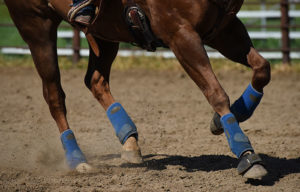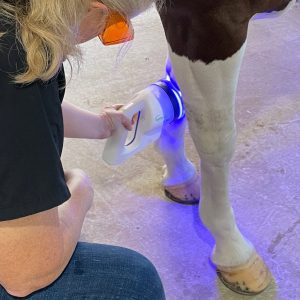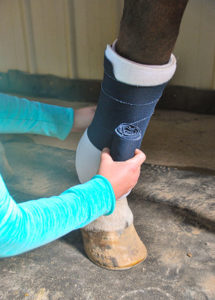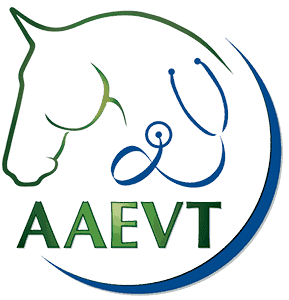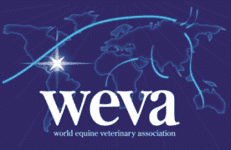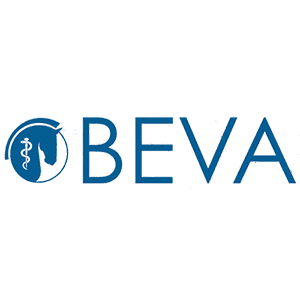Protein Primer

We simplify these complex molecules that help the horse’s body systems function properly
From muscle development to coat and hoof quality and everything between, protein plays crucial roles in keeping a horse’s body functioning properly. But proteins and their components can be challenging to understand, and most classes of horses require different protein amounts to remain healthy, grow optimally, produce and give foals the best start to life, and/or perform at their best.
The good news is while protein might seem complicated, it doesn’t have to be. Here’s a primer on all things protein.
What is protein and why is it so important?
“Proteins are chains of amino acids,” says Kristine Urschel, PhD, an associate professor of equine science in the University of Kentucky’s Department of Animal & Food Sciences, in Lexington.
Twenty-one amino acids, in different combinations, make up the various proteins the body uses. Horses’ bodies can produce some of these—termed nonessential amino acids—while they must obtain the rest—called essential amino acids—from the diet. Essential amino acids include phenylalanine, histidine, isoleucine, leucine, methionine, tryptophan, valine, and lysine.
“With the exception of water, protein is the most abundant nutrient in every part of the horse’s body,” says Carol Layton, BSc, MEd, an equine nutritionist at Balanced Equine, in Cobark, New South Wales, Australia. “Protein is a key component of hooves (including more than 90% of the hoof wall), along with muscle tissue and hair.”
It also helps several of the horse’s body systems function properly, playing key structural, metabolic, and regulatory roles: “The major components of muscle that allow it to contract, actin and myosin, are proteins,” Urschel says. “Enzymes that catalyze all of the body’s reactions are proteins, and many neurotransmitters are proteins.”
Amino acids themselves have additional roles, such as serving as fuel sources for cells to create cellular energy and aiding in the synthesis of some hormones and neurotransmitters, Urschel says.
Where do horses get protein?
Again, while they can synthesize nonessential amino acids internally, horses must consume essential amino acids in their diet.
“This is typically protein in the grass, hay, oats, corn, soybean meal, etc., or occasionally as free amino acids that have been fortified in the commercial feed,” Urschel says. “The most common amino acids that feed companies add directly to concentrates are lysine, methionine, and threonine.”
Urschel says manufacturers might add amino acids with the goal of targeting specific issues. “For example, the branched-chain amino acids (leucine, isoleucine, and valine) are in supplements targeted to the muscle because they have been shown to activate the signaling pathways that activate protein synthesis. Tryptophan is included in some calming supplements because it is a precursor to serotonin, although there’s still little to no data in horses to support tryptophan has calming effects.”
Not all feeds and protein products, however, are created equal.
“The best protein feeds or supplements are those that have sufficient essential amino acids,” Layton says. “Alfalfa/lucerne, lupins, whey protein, and split peas are examples of good-quality, high-protein feeds. There are many protein supplements on the market, but do check the essential amino acid levels.”
And don’t overlook the feeding rate. “There is a lot of focus on the percentage of protein in a feed,” Layton says, but this figure alone doesn’t tell that whole story. “What matters is the amount of protein contributed for the amount fed.”
For example, she says, an 18% protein feed can provide less protein than a 12% feed, depending on how much a horse consumes: A kilogram (about 2.2 pounds) of the 12% feed would provide 120 grams, while half a kilogram (about 1.1 pounds) of an 18% protein feed would provide 90 grams.
“When evaluating a feed, consider not just the percentage protein but the amount to be fed to calculate the amount of protein to be provided in the diet,” she says.
Carol Layton
How much protein do horses need?
Like most aspects of horse care, the answer is “it depends.”
“The higher the workload, the higher the nutrient requirements, including protein,” says Layton.
Most nutritionists and veterinarians stick to the recommendations offered in the National Research Council’s Nutrient Requirements of Horses (colloquially called the NRC). The scientists who produce the NRC indicate, based on research, all classes of horses’ requirements for dozens of nutrients, including crude protein (CP) in both grams and percentage of diet on a dry matter basis. While the essential amino acids that make up protein are what horses need in their diets, there’s not enough research on horses’ amino acid requirements to make specific recommendations for each, Urschel says. The NRC authors only estimate horses’ lysine requirements in both grams and percentage of diet on a dry matter basis; in growing horses, she adds, lysine has been found to be the amino acid most likely to be limiting (provided in the lowest amount relative to the horse’s need).
Urschel says CP is essentially the amount of nitrogen in a feed and, Layton adds, “protein contains nitrogen, so CP is a useful indicator of protein levels.”
For instance, the NRC indicates a 500-kilogram (roughly 1,100-pound) mature horse at maintenance needs about 650 grams of CP each day, which should amount to about 8% of the diet.
Breeding stallions, mature horses in light work, and young horses not in training have slightly higher protein requirements than horses at rest. Generally speaking, three groups of horses have significantly increased protein requirements: growing horses, lactating broodmares, and horses in heavy work.
Growing horses
“Actively growing horses have very high protein requirements due to cellular growth and rapidly building body tissues,” Layton says.
Urschel notes that the younger the horses are, the higher their daily rates of gain and, so, the higher their protein needs.
“This protein is primarily used to support their increase in body size (muscle is about 20% protein, so to grow muscle, you need lots of protein),” she says.
The NRC’s general recommendations:
- For weanlings (about 4 to 11 months): 14-15% CP.
- For yearlings (12 to 23 months): 11-13% CP, depending on whether they’re in training (i.e., more if they are).
- 2-year-olds (up to 36 months): 10-12% CP, depending on whether they’re in training.
The authors provide more specific figures, including growth rates and monthly breakdowns within years.

Broodmares
Lactating broodmares, particularly in the first three months after foaling, have some of the highest protein requirements.
“In order for the foals to get the protein they need to support their high growth rates, (broodmares) need to provide that protein in the milk,” Urschel says.
Mares’ nutritional needs increase while carrying a foal, as well, but to a lesser degree.
“Protein requirements only increase modestly in the first two trimesters,” Urschel says. “There is a larger increase in the last trimester to support the more rapid growth of the foal during this period.”
The general NRC recommendations:
- Lactating mares: About 13% CP, decreasing to about 11% starting roughly three months after foaling.
- Pregnant mares: The same as maintenance until 9, 10, and 11 months of gestation, when it increases to 10-11% CP until foaling.
Exercising horses
“For working horses, protein requirements increase with the intensity of exercise to support muscle recovery and increase in muscle mass,” Urschel says. “A certain amount of protein is also lost as sweat and, so, as sweating increases, that can also contribute to the increase in protein requirements.”
She adds that growing horses in work (long yearlings to roughly 3 years) will have even higher protein requirements than a mature horse in work: “They need enough protein to support their growth rate and their level of exercise.”
The NRC recommendations:
- Horses in light work: 9.5-10% CP.
- Horses in moderate work: 10-11% CP.
- Horses in intense work: 11-12% CP.
A few other key points to remember about horses’ protein requirements:
Aged equids
While protein requirements don’t increase as horses age, it might be more challenging to ensure they’re consuming and digesting an adequate amount.
Chewing allows horses to break down forages and other feeds to a certain particle size which, when swallowed, allows their bodies to extract the nutrients—including protein—most efficiently. Because dental and chewing issues are common in senior horses, some can’t make the most of the feedstuffs they ingest.
“It’s important to ensure food sources are more easily consumed,” Layton says. “If you’re feeding hay, cutting it up into smaller pieces or soaking cubes and pellets will help.”
Wetting feed can also help senior horses digest it more efficiently, she adds.
Protein isn’t scary
When considering how much protein your horse needs, don’t let myths—most of which have been disproven by research—sway your decisions.
“Protein has a bad reputation in horse diets for reasons such as ‘making horses hot’ or even causing developmental orthopedic diseases,” Urschel says. “Neither of these claims are founded, and protein is not a nutrient to fear in the diet.”
Remember: amino acids are key
“When we talk about protein requirements, we mainly focus on crude protein requirements,” Urschel says, “but remember that what horses actually need is enough of each of the essential amino acids and then enough amino nitrogen to make the nonessential amino acids.”
How do I know if a horse isn’t getting enough?
As we’ve discussed, protein and the amino acids it contains play important roles in keeping horses healthy. A deficiency can cause issues including weight and muscle mass loss, poor hair and hoof quality, diminished growth rates, and poor performance and recovery.
First you’ll need to determine how much protein a horse gets from the forage they consume, since it makes up the bulk of most horses’ diets.
“Testing the forage, whether it be hay or pasture, is the best approach for finding nutrient levels, including protein,” Layton says.
Most feed and supplement manufacturers include nutritional values on their product packaging (if they don’t, an internet search or a call to the manufacturer or feed mill might help), so some simple calculations should reveal how much protein they provide.
Once you’ve calculated the total amount of CP in the horse’s diet, compare it to the NRC requirements for your horse’s age and workload. A 500-kilogram horse in heavy work, for example, would need about 1,000 grams of protein daily, Layton says. If the total CP in the horse’s diet is less than that, consider adding protein via a supplement or additional feed or forage.
The more common scenario is an equine athlete consuming more protein than the NRC authors recommend. In many cases, Urschel says, this is largely unavoidable (“It’s just due to how we feed horses to ensure their energy requirements are being met.”) and of less concern from a health standpoint.
Still, “there is no need to strive to provide excessive amounts of protein in the diet,” she says. “Protein that can’t be used for protein synthesis or other functions is broken down by the body, ultimately resulting in ammonia and urea formation, and that nitrogen gets excreted in the urine. Protein is an expensive ingredient in the diet, and providing protein beyond what the body is able to use really just results in expensive urine (and the possible human/horse health concerns that go along with high ammonia levels in barns).”
When in doubt, an equine nutritionist or veterinarian can evaluate a horse’s diet to ensure it contains adequate protein levels for his life stage and workload.
Horse owners typically provide too much protein when feeding their horses at maintenance and in light exercise. And again, they meet even the requirements of horses with high protein needs—which also have high energy (calorie) needs—with typical performance diets and feed ingredients. An exception would be if they’re meeting a large portion of the energy requirement with oil (which doesn’t contain protein). If you’re caring for horses with higher protein requirements, focus more on making sure they’re receiving enough of the essential amino acids.
Take-Home Message
Proteins and the amino acids that form them play important roles in the horse’s body, from muscle building and function to neurotransmission and hormone synthesis. Therefore, ensuring horses have good-quality protein sources in their diets is key to keeping them healthy.

Written by:
Erica Larson
Related Articles
Stay on top of the most recent Horse Health news with





